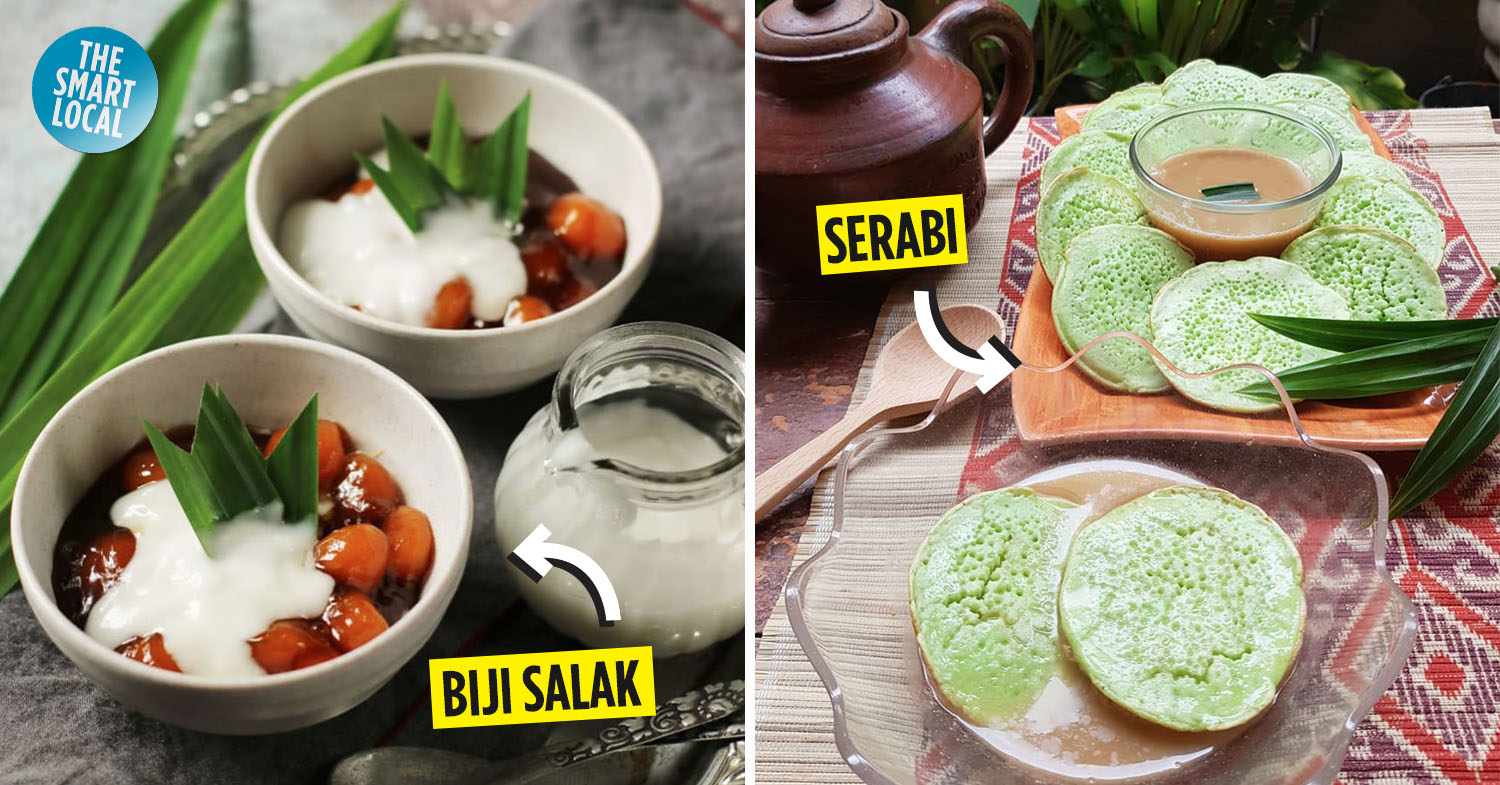Popular traditional Indonesian desserts
While European-style cakes and pastries are a hit in Indonesia, many Indonesians still have a different view towards sweet treats. Unlike the imported Western understanding of “dessert,” Indonesian traditional cakes are snacks that can be eaten pretty much any time.
For a nostalgic trip, here’s a list of Indonesian traditional desserts that lots of us grew up with. You can still get them at street vendors, markets, and cake shops in Jakarta such as Mayestik and Monami, as well as old-school bakeries such as Suisse Bakery and Vineth Bakery.
1. Serabi – pandan-flavored traditional pancake
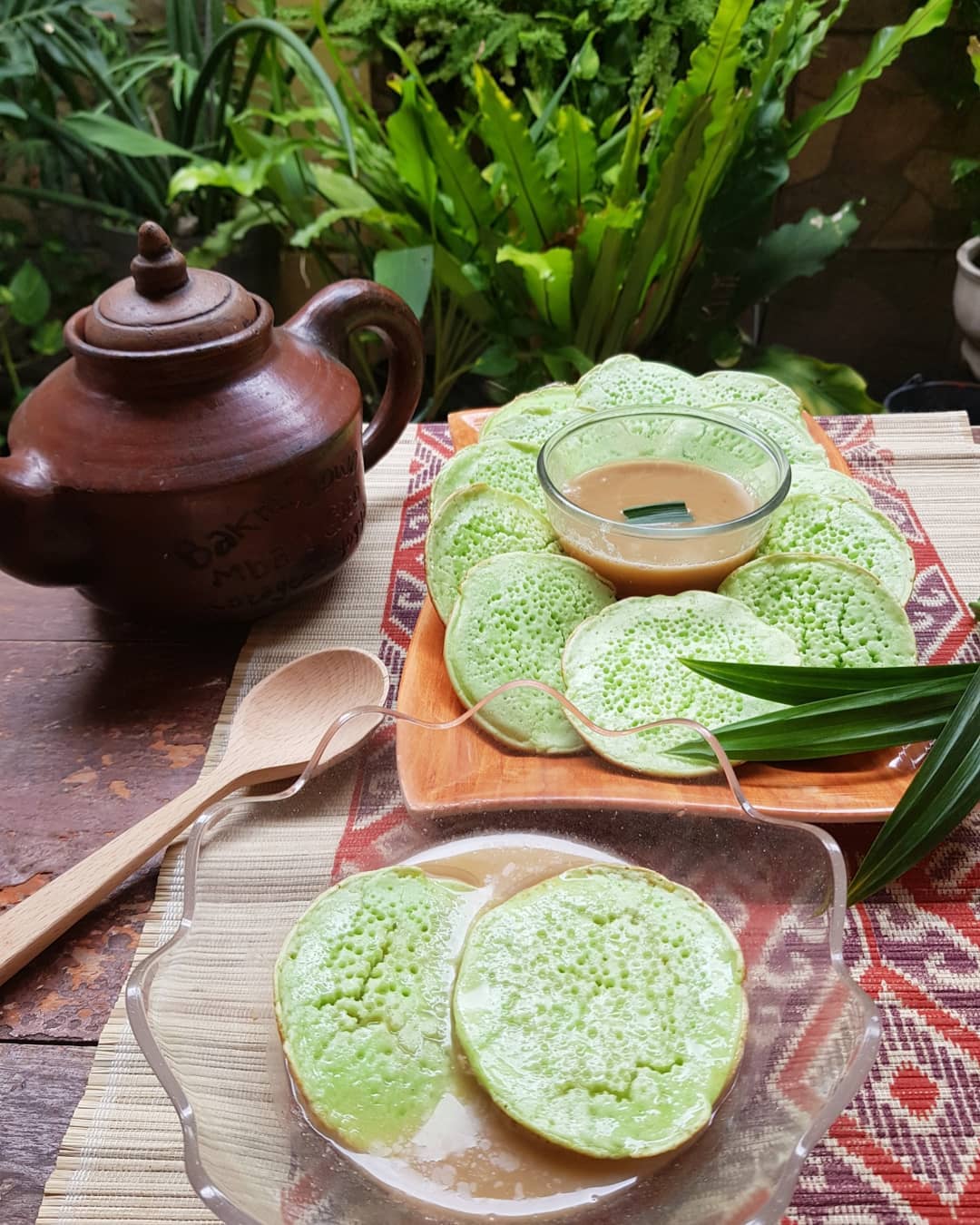
Image credit: @ruswida_amiranti
Serabi is a Javanese traditional pancake which other regions have their own versions of. It’s typically made from rice flour and coconut milk – which give the cake some weight – and doused in liquid coconut sugar.
While white-colored serabi is common, green pandan-flavored ones are equally popular and also more fragrant. It’s a snack that all members of the family can bond over.
2. Kue cubit – cute hotcakes often sold by street vendors
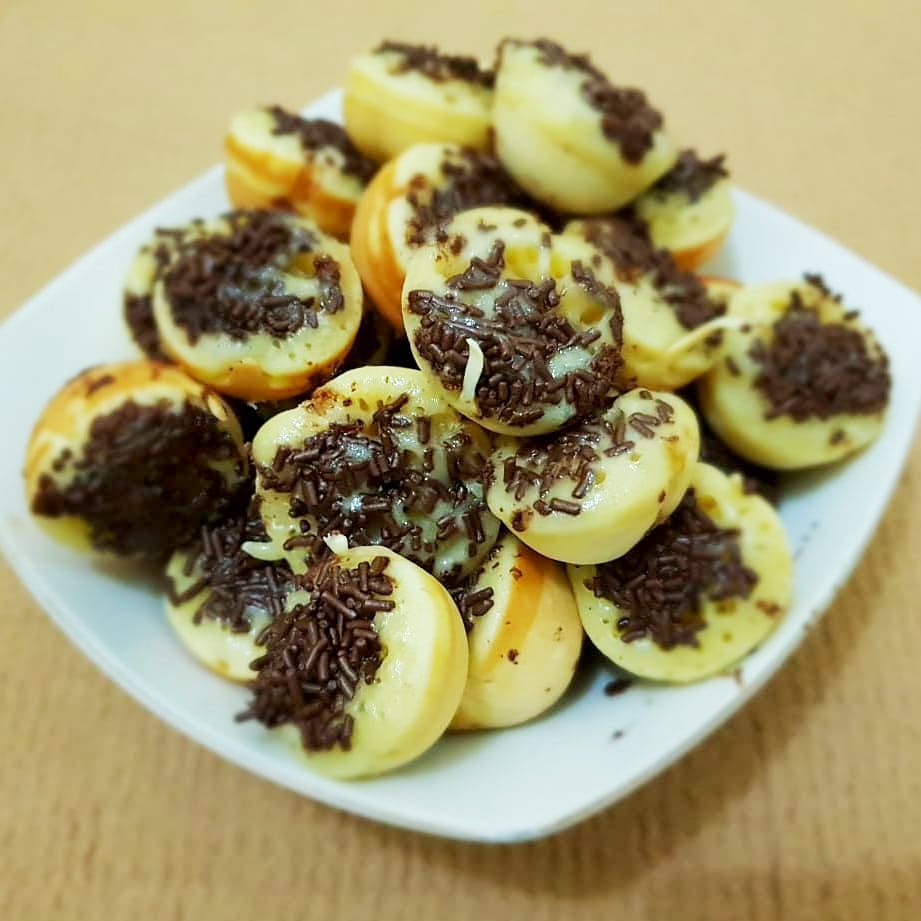
Image adapted from: @dm.food_
You’ve probably seen street vendors, or kaki lima, selling these baby hotcakes in front of your school. Made of simple ingredients – milk and flour – kue cubit (cubit means “pinch”) is normally served with chocolate sprinkles or cheese. Nowadays, you can also find places that offer green tea and red velvet-flavored kue cubit.
A popular trend is ordering them “half done” – meaning that the center of the hotcake will remain just slightly undercooked.
3. Kue rangi – a Betawi delicacy for coconut lovers
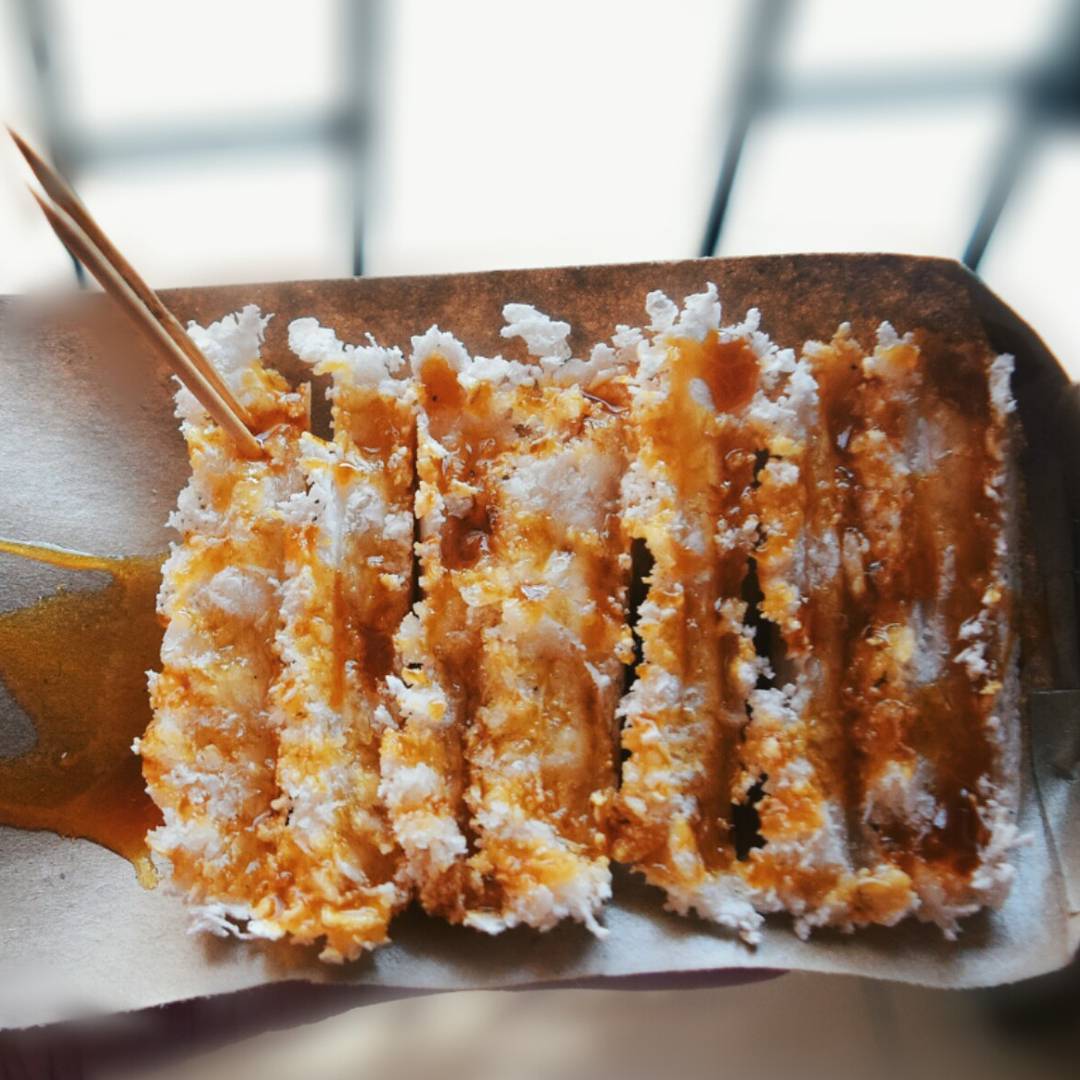
Image credit: @ciaandri
Kue rangi is a Betawi dessert whose main ingredients are tapioca flour and shredded coconut. It’s then glazed with caramelized brown sugar, which adds a subtly sweet flavor that doesn’t overpower that taste of coconut.
One of the joys of buying kue rangi at a kaki lima lies in watching the seller make them in front of you.
4. Pukis – cake made of coconut milk that goes well with cheese
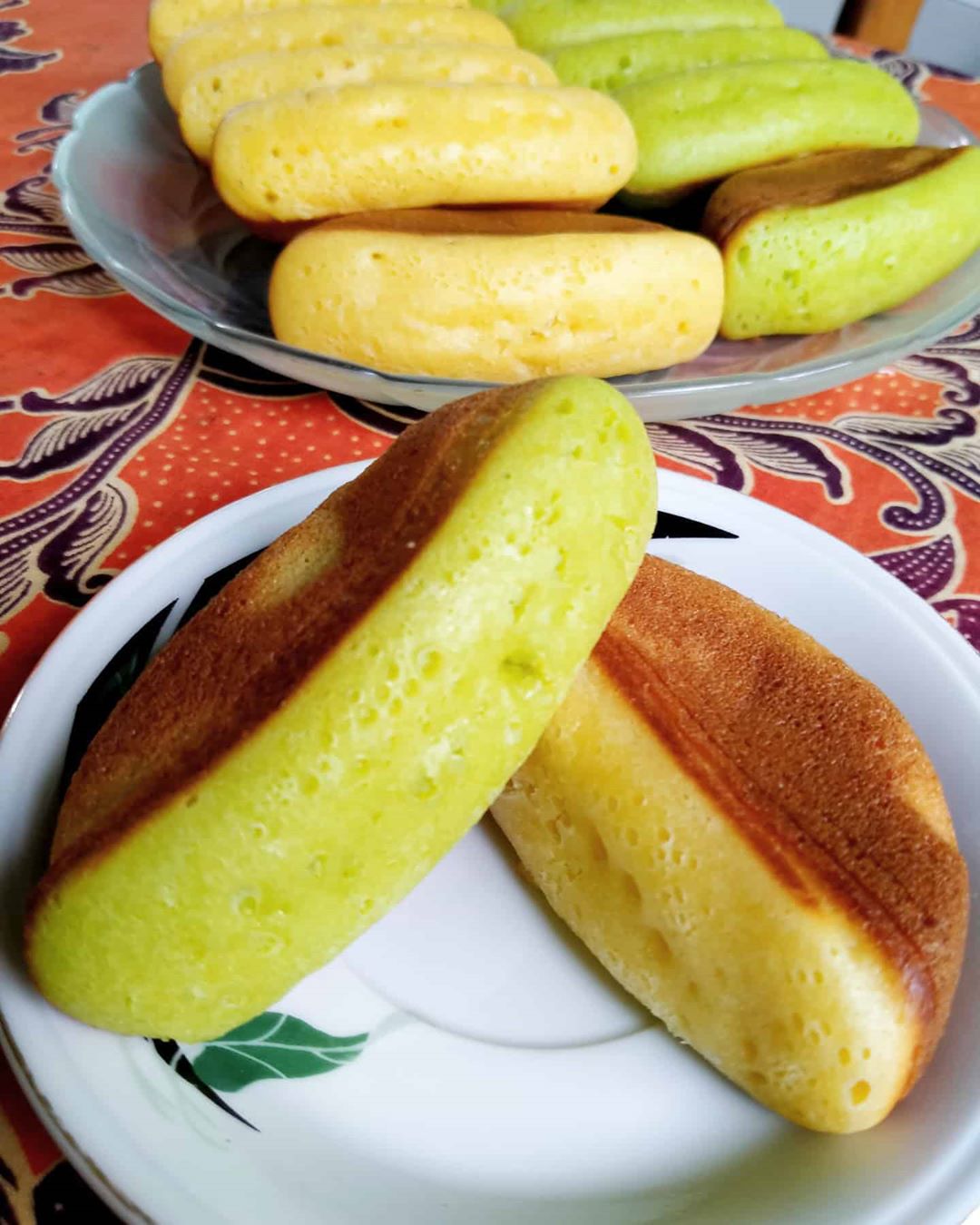
Image credit: @mamayo.cake.cookies
Pukis is a fluffy cake that almost looks like a small peeled local banana. Its texture is similar to that of waffles, but it’s a lot softer thanks to one of its key ingredients: coconut milk.
The most popular toppings or fillings are cheese and chocolate, though like a lot of traditional cakes, green tea and red velvet flavors have also become increasingly in fashion.
These cakes can be found in many places – from morning markets to stalls in big shopping malls.
5. Klepon – green rice balls filled with liquid palm sugar
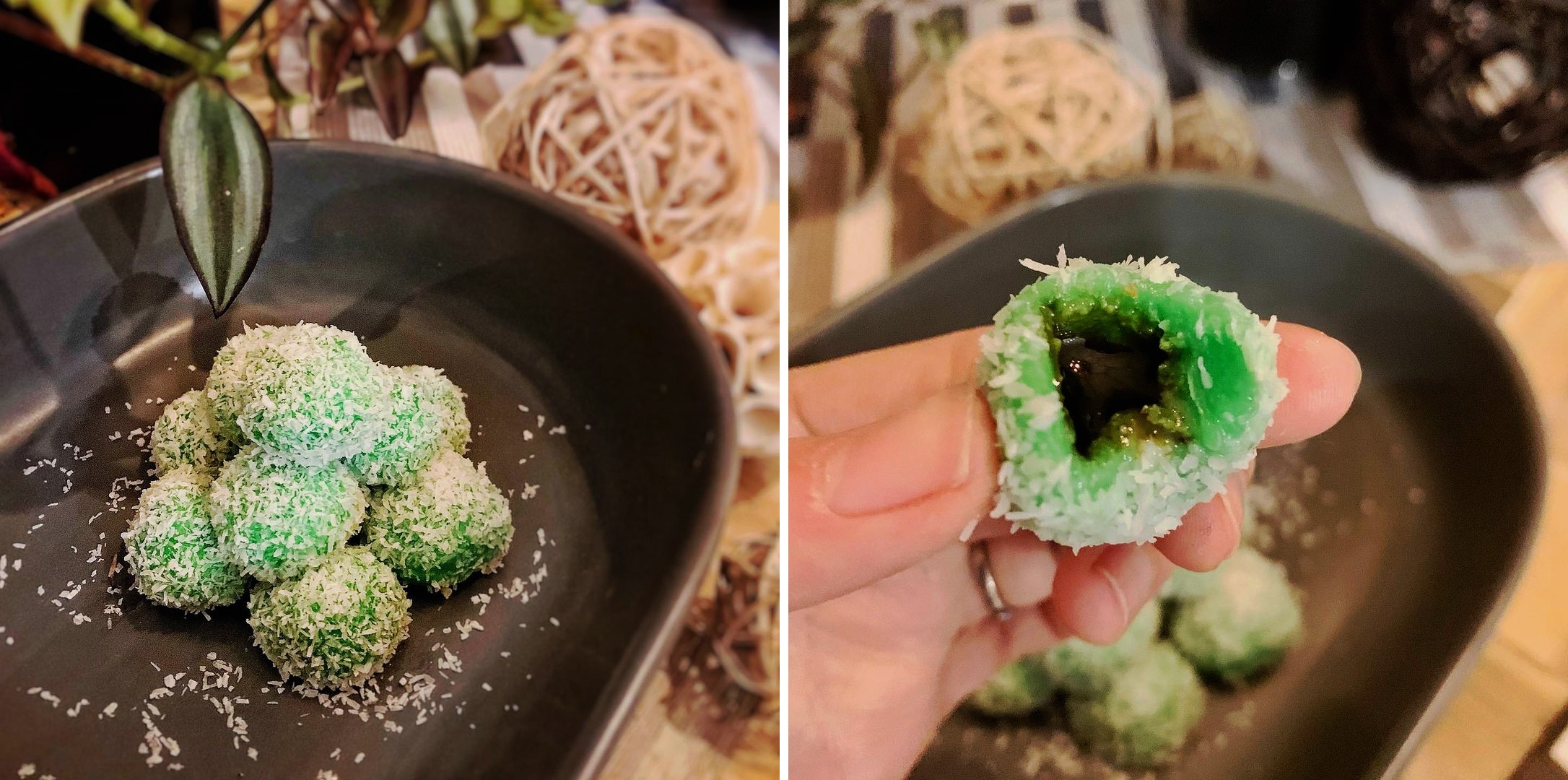
Image adapted from: @baxer.house
Klepon is a delicious dessert in the shape of a little green ball coated with shredded coconut. Its primary ingredient is glutinous rice flour, and the green color traditionally comes from pandan paste.
This snack is notoriously difficult to make because if it’s too big, it’ll be difficult to eat as it’s filled with palm sugar, and if it’s too small, you won’t really taste the sweet part at all. The right level of chewiness is also hard to attain. In short, you should be happy if you come across some klepon that’s done just right.
6. Bika Ambon – a North Sumatran dessert with a chewy texture

Image credit: @bolumeranti_id
Another dessert that’s known to be quite hard to make is the North Sumatran delicacy, bika Ambon, which is loved for its spongy and chewy texture. They’re usually yellow, although you’ll also find chocolate and pandan ones.
This dessert can be a little heavy on the stomach, so a slice or two will normally be enough to satisfy your bika Ambon craving. Tapioca flour, yeast, and coconut milk are its essential ingredients – in addition to eggs and sugar.
7. Kue lapis beras – rice cake that you can peel layer by layer
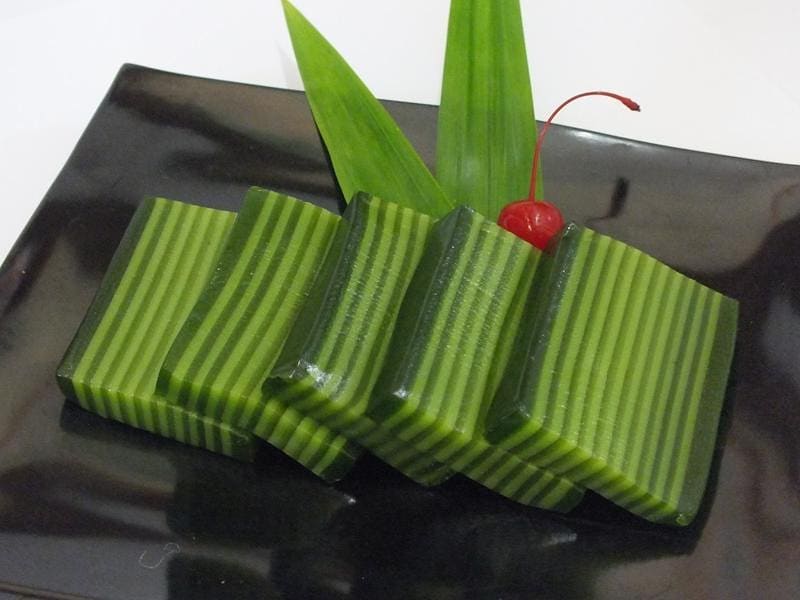
Image credit: @tokukue_eca
Kue lapis beras is a sticky rice cake with many layers that kids – and even adults – love to peel off and eat one by one. They come in many different colors, but pandan green or red, or a combination of both, are what you’ll normally find.
This cake is surprisingly filling despite its size. Each individual layer is quite dense, but the fact that it’s not overly sweet makes it a well-balanced dessert to munch on between meals.
8. Biji salak – sweet potato balls often served for iftar
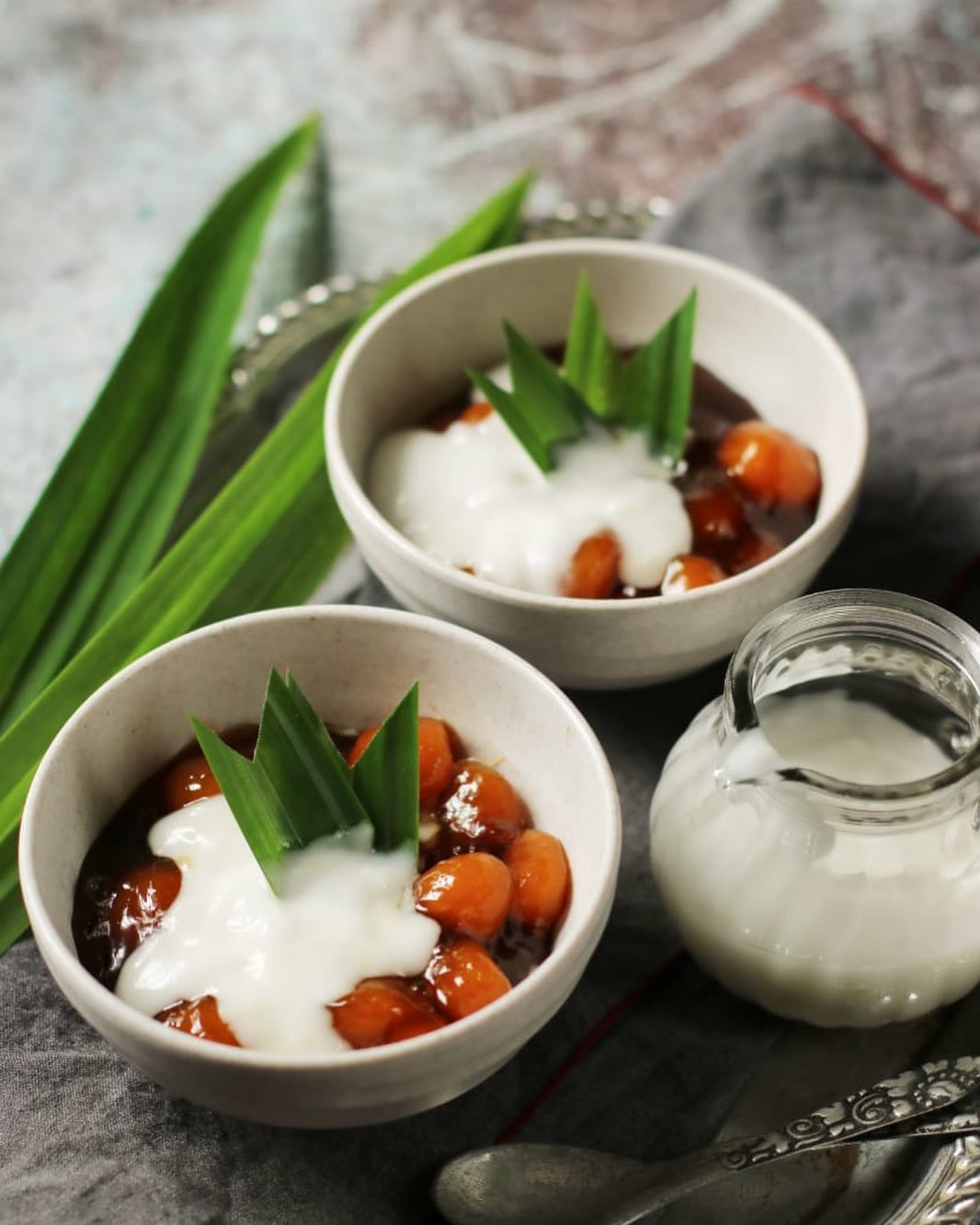
Image credit: @ellzkitchenmalang
Often confused with a similar Javanese dessert called candil, biji salak is a sweet Betawi treat made from sweet potatoes mixed with tapioca flour. Like klepon, it is rolled into little balls that are then boiled.
The chewiness of biji salak makes it fun to eat, and it’s especially tasty when warm. These sweet potato balls are served with liquid brown sugar and coconut milk.
Biji salak is particularly popular during Ramadan, as many street vendors will sell them in takeaway cups and bowls for iftar, or the meal Muslims eat to break their fast.
Popular Indonesian traditional desserts & snacks
Have one of these treats to remember what it was like to eat traditional dessert at your favorite street vendor, or maybe even your grandparents’ house.
Everyone has their own special memory of nibbling on pukis, kue cubit, or kue lapis. Good thing they’re still around.
For more food articles:
- 10 Indonesian snacks you ate as a kid
- 8 iced coffee drinks to get in Jakarta
- 8 Jakarta dessert cafes
Cover image adapted from: @ellzkitchenmalang and @ruswida_amiranti
Enjoying The Smart Local Indonesia? Follow us on Facebook, Twitter, Telegram, and Instagram for more stories like this. If you have a story to share, email us at [email protected].
